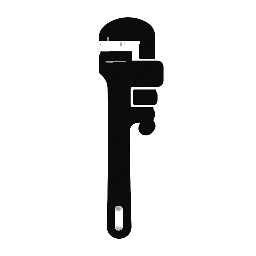Clean, safe drinking water is a fundamental necessity, and ensuring its purity is a complex undertaking. One of the most critical safeguards in any water distribution system is the backflow preventer. These vital devices act as a one-way gate, stopping contaminated water from flowing backward into the potable (drinkable) water supply.
However, a backflow preventer is only as effective as its last test. This in-depth guide will unravel the essential world of backflow preventer testing requirements, covering everything from why it’s crucial to who performs the tests, what codes mandate, and how to ensure your system remains compliant and your water safe.
Why Backflow Preventer Testing is Not Optional: The Core Necessity
Backflow preventers are mechanical devices with internal components (springs, seals, diaphragms, check valves) that can wear out, accumulate debris, or fail over time. Without regular testing, a malfunctioning backflow preventer provides a false sense of security, leaving the public water supply vulnerable to contamination.
The Dangers of Backflow:
- Cross-Contamination: When non-potable water (e.g., from an irrigation system, fire suppression system, or industrial process) flows backward into the drinking water supply.
- Health Hazards: This can introduce bacteria, viruses, chemicals, pesticides, fertilizers, and other pollutants into the water used for drinking, cooking, and bathing.
- Public Health Crises: Uncontrolled backflow incidents have led to severe outbreaks of waterborne illnesses, hospitalizations, and even fatalities.
- Legal & Financial Liability: Property owners are legally responsible for preventing backflow originating from their premises. Non-compliance can result in hefty fines, legal action, and significant financial liability in the event of contamination.
In essence, backflow preventer testing is a public health imperative, a regulatory requirement, and a diligent act of property ownership.
Understanding Backflow and Cross-Connections
To appreciate testing, first understand the problem:
- Backflow: The undesirable reversal of flow of water or other substances into the public water system or consumer’s potable water system from a non-potable source. There are two main types:
- Backsiphonage: Caused by a loss of pressure in the potable water supply (e.g., a broken water main, high demand from a fire hydrant), creating a vacuum that “siphons” non-potable water back into the clean lines.
- Backpressure: Occurs when the pressure in a non-potable system (e.g., a boiler, a pump, an elevated tank) exceeds the pressure in the potable water supply, forcing contaminated water backward.
- Cross-Connection: Any actual or potential connection between a potable water supply and any non-potable source or system. This is where backflow preventers are installed.
Types of Backflow Preventers and Their Applications
Different types of backflow preventers are designed for varying degrees of hazard:
- Reduced Pressure Principle (RPZ) Assemblies:
- Protection Level: High hazard.
- Design: Two independently operating, spring-loaded check valves, with a hydraulically operated differential pressure relief valve located between them. Includes two shut-off valves and four test cocks.
- Applications: Fire suppression systems, irrigation, industrial processes, hospitals, chemical plants – any application where a health hazard is present.
- Double Check Valve (DCV) Assemblies:
- Protection Level: Low hazard.
- Design: Two independently operating, spring-loaded check valves. Includes two shut-off valves and four test cocks.
- Applications: Fire suppression systems (non-chemical), irrigation where no chemicals are injected, some commercial properties where the potential contaminant is non-toxic (e.g., stagnant water).
- Pressure Vacuum Breaker (PVB) Assemblies / Spill-Resistant Pressure Vacuum Breaker (SVB) Assemblies:
- Protection Level: High hazard (for backsiphonage only).
- Design: A spring-loaded check valve and an independently operating, spring-loaded air inlet valve. Includes two shut-off valves and two test cocks.
- Applications: Irrigation systems (above ground), industrial facilities where only backsiphonage is a concern. Must be installed at least 12 inches above the highest downstream outlet.
- Atmospheric Vacuum Breaker (AVB):
- Protection Level: High hazard (for backsiphonage only).
- Design: Simplest design, with an air inlet valve that opens when system pressure drops.
- Applications: Individual hose bibs, some irrigation, laboratory sinks. Not testable, and has strict installation height requirements. Not typically used for main service connections.
- Residential Dual Check Valves:
- Protection Level: Very low hazard (often for internal plumbing only).
- Design: Two small check valves. Often non-testable.
- Applications: Point-of-use protection, often at the water meter or on individual appliances.
Note: RPZ and DCV assemblies are “testable” because they have the necessary shut-off valves and test cocks to perform accurate diagnostic tests. PVBs and SVBs are also testable. AVBs and basic residential dual checks are generally not testable and rely on their design principles.
The Mandate: Who Requires Backflow Testing?
Backflow prevention and testing requirements are primarily driven by:
- Federal Regulations: The Environmental Protection Agency (EPA) mandates that public water systems implement cross-connection control programs to protect drinking water.
- State Plumbing Codes & Health Departments: Each state adopts plumbing codes (e.g., International Plumbing Code – IPC, Uniform Plumbing Code – UPC) and has health department regulations that dictate backflow prevention and testing. These often build upon federal guidelines.
- Local Water Purveyors (Water Utilities/Municipalities): This is the most direct authority for property owners. Your local water department or utility company is responsible for ensuring the safety of the water they deliver. They will:
- Identify potential cross-connections.
- Require the installation of specific types of backflow preventers.
- Mandate annual testing by certified technicians.
- Maintain records of backflow preventer installations and test results.
- Enforce compliance, often through fines or even disconnection of water service for non-compliance.
- Insurance Companies: Many commercial property insurance policies require active cross-connection control programs, including annual backflow testing, to maintain coverage, especially for fire suppression systems.
Backflow Preventer Testing Requirements: The Nitty-Gritty
1. Annual Testing is the Standard
- Frequency: The overwhelming majority of jurisdictions and water purveyors require annual testing of all testable backflow prevention assemblies. Some high-hazard applications might require semi-annual testing.
- Purpose: To verify that each component of the assembly (check valves, relief valve, air inlet valve) is functioning correctly within manufacturer specifications and protecting the potable water supply.
- Documentation: Test results must be accurately recorded on standardized forms provided by the local water authority or a recognized industry body. These forms typically include:
- Date of test
- Tester’s name and certification number
- Type of assembly (RPZ, DCV, PVB, SVB)
- Manufacturer, model, and serial number of the assembly
- Location of the assembly
- Test readings (initial and final pressure differentials, relief valve opening point, etc.)
- Pass/Fail status
- Any repairs or maintenance performed
2. Who Can Perform the Test?
- Certified Backflow Testers: Backflow preventer testing is a specialized skill requiring specific training and certification. You cannot simply test it yourself.
- Certification Bodies: Testers are typically certified by state or local health departments, water utility companies, or recognized industry organizations (e.g., ASSE International, ABPA).
- Equipment Calibration: Certified testers use specialized, calibrated test kits that measure pressure differentials with high accuracy. These kits themselves must be annually calibrated to ensure reliable results.
- Local Licensing: Always ensure the tester you hire is licensed to operate in your specific city or county and is on your water purveyor’s list of approved testers.
3. What Happens During a Test?
The test procedure varies slightly depending on the type of assembly, but generally involves:
- Preparation: The tester will connect their calibrated test kit to the test cocks on the backflow preventer.
- Isolation: The shut-off valves before and after the assembly are closed.
- Testing Individual Components: The tester systematically checks each component (e.g., in an RPZ, they test the first check valve, the relief valve, and the second check valve) for proper operation under specific pressure conditions.
- For an RPZ, a critical test is verifying the relief valve opens before the pressure differential across the first check valve drops too low, ensuring it discharges water to atmosphere rather than allowing backflow.
- For a DCV, both check valves are tested for their ability to hold pressure.
- For PVBs/SVBs, the air inlet valve and check valve are tested.
- Recording Results: All readings are meticulously recorded.
- Pass or Fail:
- Pass: If all components meet the required specifications, the assembly passes. The tester submits the report to the water purveyor.
- Fail: If any component fails to meet specifications, the assembly fails.
- Repair/Replace: The tester will inform the property owner. The assembly must be repaired (e.g., replacing springs, seals, or check valve modules) or completely replaced.
- Retest: After repairs, the assembly must be retested to ensure it now functions correctly.
- Urgency: Failed high-hazard assemblies (like RPZs) often require immediate repair or replacement, sometimes within hours or days, to avoid water service disconnection.
4. Responsibilities of the Property Owner
- Awareness: Know if you have backflow preventers on your property. Common locations include:
- Just after the main water meter connection.
- On fire suppression lines (especially sprinkler systems).
- On irrigation systems.
- Connections to boilers or chillers.
- Commercial kitchens (e.g., dishwashers, coffee machines).
- Medical/dental offices.
- Maintenance: Keep the area around the backflow preventer clear and accessible for testing and maintenance. Protect it from freezing in cold climates (e.g., insulated enclosures).
- Scheduling Tests: It is your responsibility to schedule the annual test with a certified technician. Your water purveyor will likely send reminders, but ultimately the onus is on the property owner.
- Paying for Tests/Repairs: The cost of testing and any necessary repairs/replacement is borne by the property owner.
- Compliance: Ensure test reports are submitted to the proper authority in a timely manner. Non-compliance can lead to warnings, fines, and even water shut-off.
Conclusion: Stay Compliant, Stay Safe
Backflow preventer testing is a non-negotiable aspect of responsible property ownership and public health protection. It’s a proactive measure that safeguards drinking water from potential contamination. By understanding the types of backflow preventers, the “why” behind testing, the “who” that performs it, and your responsibilities as a property owner, you can ensure your water supply remains safe, your property compliant, and your peace of mind intact. Don’t wait for an incident; prioritize your annual backflow testing.


Leave a Reply